Little Cottonwood Canyon – Hurry Up & Wait
This line of stopped cars heading up Little Cottonwood Canyon road looks, smells and feels like a traffic jam, but there’s far more to it than just that.
At the heart of the problem is that the Little Cottonwood Canyon (LCC) road is a narrow, winding, steep, two-lane mountain road which is threatened by 36+ avalanche paths and it happens to be located in one of the highest snow-load areas in the United States. This in itself this isn’t a problem, except that the highest traffic demands usually occur right after the highest snow events as thousands of people hurry-up and wait to get in line for the 9:00am opening bell at Alta and Snowbird.
The Utah Department of Transportation (UDOT) controls LCC with explosives and artillery, but they can’t start doing that until first light when they can both see the results, and nowadays, see if someone is hiking up one of the avalanche slide paths. Because of the size of this job and then any subsequent road clearing with a snowplow, even if the efforts start at 6:00am, it can still take 2-4 hours to control all of the paths, and even that can be vastly complicated by avalanche conditions. It is one thing if you shoot a path and it immediately complies by sliding, but what if it is loaded and doesn’t respond to explosives, but may release an hour later as the temperatures rise just as the LCC road is completely packed with cars? On top of that, the resorts hate it when the roads are closed, all of which must make UDOT’s job incredibly stressful.
Yet another factor is that rental cars are essentially required equipment for a Utah ski vacation, so you have a lot of people in crappy 2wd rentals, many of whom have limited snow driving experience, driving up and down the canyons. All it takes is one little fender-bender to completely stuff traffic, which happens pretty much every day, if not multiple times per day.
And all of this is just to get TO the resorts. When they let out at 4:00pm, it is the same thing going down, if not worse. A friend recently spent three hours going from Alta to Snowbird – a total distance of about a mile. The problem here is that once you get in your car, you are immediately part of the problem and yet there is no way to extricate yourself as you are completely hemmed in.
It is a huge mess and seemingly getting worse even though resort numbers are down or flat. My personal dream/vision is that someday soon there will be a Euro style train running up LCC and BCC, which would be protected by snow-bridges or tunnels. This would eliminate the whole need for artillery and be much more reliable, not to mention better for the air quality. While almost everyone agrees this is a good idea, the resort-expansionist crowd is quick to reply with “HA! And who is going to pay for that?” I don’t know, but I think the answer will be clearer once a traffic jam is wiped out by an avalanche, or when John Q. Public is hit by artillery while skiing on public land (actually, in the last instance, they’d probably just outlaw BC skiing first…).
Aside from the cost, there are all sorts of other issues with trains, such as where to find parking space for all of the cars down at the base of the canyons. Because of the proximity to the resorts, all of the surrounding land is highly coveted and developed real estate, so it is not like there are huge open lots available for transit stations. I think if Utah is going to continue to promote tourism and skiing in LCC and BCC, this is a serious bottleneck, which is perhaps why Gubner Gary is so into fracking. One thing that seems obvious to me is that adding even more chairlifts, trams and gondolas without first addressing the traffic issues is only going t make the situation worse.
So why bother? The photo below is one good reason. There just aren’t that many places where you can have both the advantages of a major metropolitan area right next to beautiful mountains.
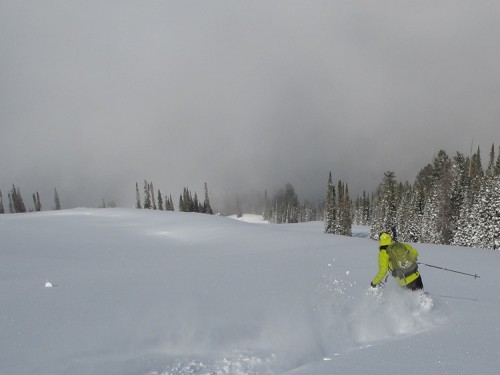
________________________________
Help support StraightChuter.com and carry emergency car bivy gear in a Yakima Sky Box 16 Cargo Box from Backcountry.com. Click on the photo below…
Category: Wasatch Mountains


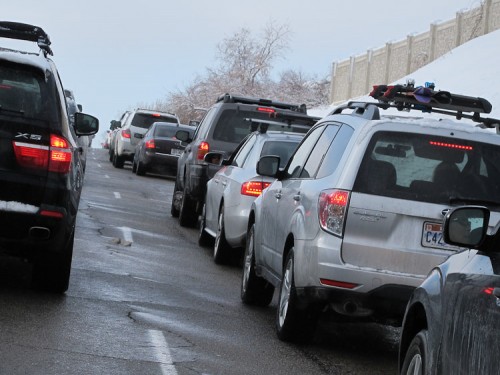
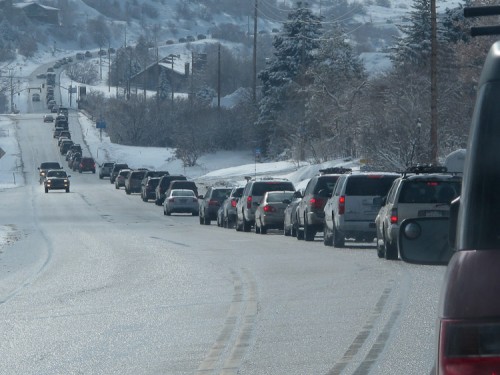






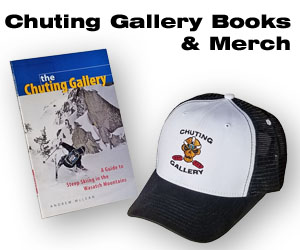
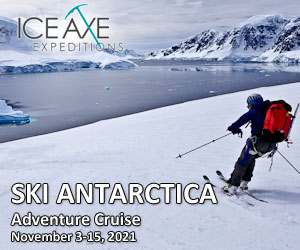

your mention of the quandry of what to do with all the cars if a euro-style train is built for transport has me saying this: it’s already a problem. debby party nurse and i carpooled yesterday, but she had to park her car in the south valley in order to connect with friends apres ski. at 9am we talked about options, opining all the lots were already full. kurt –what does india stand for– o is out of the country so we parked her car there, around 9400 south and highland. pays to have friends with large driveways?
A train up LCC and BCC would make so much more sense than the useless SkiLink. If all the (social and economic) energy that is being sucked by that project were instead used to develop a viable train infrastructure, it could be constructed in a few years. You should start a petition! If anybody can do it…
For some perspective, a lot of commuters in the US deal with worse traffic than yesterday in LCC on a daily basis. We are spoiled here. If you want to beat the traffic go early or late. The slog down isn’t fun, but the cottonwoods will always experience congestion during peak access hours. It’s a fact of life. A train might help, not opposed to that. But the traffic situation in the canyons is currently inconvenient and far from being a crisis.
Maybe The Canyons will bless us with SkiLink2 and it will get rid of all the LCC traffic. Ya know, just like SkiLink is gonna do with all the BCC traffic.
Hmmm, I don’t know. Zermatt addressed the same issues 50 years ago and it is a far better place for it today. Traffic jams in LCC are hardly a crisis in terms of genocide or world hunger, but there are means to fix them. As far as going earlier, I was thinking of giving this Dawn Patrol thing a try…
One thing that compounded yesterday’s commute was the 8ish hour closure proceeding the resorts opening. That said I’d like to see a train, but am a little concerned about stops for BC access, ice climbing access, climbing access, etc. There are probably 10 stops that people use at different times of year, nothing unmanageable but something to keep in mind.
I sat in my car with three friends from 800am yesterday to 1020am when we finally arrived at Snowbird. And I kept thinking that there are probably a couple of things that could be done fairly quickly to ease the traffic.
UTA could run a bus schedule that helps people get up to the resorts; I often drive up because the bus schedule is next to useless. Starting my day on a standing room only bus at 700am isn’t my idea of good planning by UTA. Plus I run the risk of spilling my coffee ! Run some more buses, it would help.
Enforce rules about 4 wheel drive/snow tires, chains etc. and keep some of the cars that shouldn’t be in the canyons out of there.
If I drive I carpool, and I get really tired of seeing those big SUVs with 1 person in them. Carpool, it’ll help the 1 hour it takes to drive a mile on Wasatch pass so much more enjoyably (although I suspect that many of the people reading your blog already do, so I may be preaching to the choir !).
Perhaps there should be consideration given to charging people to drive up the canyons, with discounts for full cars, that would really encourage carpooling. You could charge $3.75 for a car, with $1.25 off per person, so 4 people is free. The resorts could provide more space for carpools to park.
All of these things, and probably more, could be done in parallel with planning better transportation in the canyons, whether that be trains/tunnels/moving walkways (only joking).
Who will pay for the trains? The users (mostly – through ticket sales – maybe higher prices during bluebird, waist-deep powder weekend days?) and tax payers (because improved air and increased tourism capacity is in the public interest). Where to put the cars? How bout underground parking? And / or locate the stations / parking away from the immediate bottom of canyon areas?
Also agree, NO MORE LIFTS ever.
Bro – the same thing applies to Zion NP and it has been a complete non-issue. If you want to stop at a trailhead or off-route place, you pull the cord and the bus stops. Having seen that area before and after, it is 100% improved with the buses. If for some reason you need to drive up there, you can still get a pass.
Peter – one thing with this issue and many other Wasatch issues is that there has never even been an opportunity for people to pay for services even if they want to. In my case, I’d be happy (?) to pay for a backcountry season’s pass usage fee, a parking fee, or whatever as I readily admit I use the area a lot and it has value to me. Instead, backcountry users are seen as freeloaders who cause nothing but problems. Also, what about a tax on passes at the resorts which helps to cover the cost of road improvements? Unlike MANY of the other Wasatch canyons which are closed in the winter, LCC and BCC are kept open mainly to service the resorts, which are private, for-profit companies. The cost of a day ticket has gone up so much that it is now almost irrelevant whether it costs $101 or $107 per day.
I’m a fan of adding one more lane that is buses only and reversible. Buses go up it from 5am to Noon, down it from 1pm to 10pm. (With an hour in the middle to avoid head on bus collisions). The traffic problems occur in one direction, and they occur at very predictable times. Adding one lane and more buses is a lot cheaper and less environmentally damaging than adding a train. If the buses had their own lane at busy times, people would actually take them because, by doing so they would bypass the cars stuck in traffic. In other words, buses would be faster than cars. You could also consider adding fees for cars, but collecting fees at the bottom would cause another bottleneck.
They could then build a multi-level parking deck at the wasatch park and ride, and essentially all buses would leave from there. This way, if you went up one canyon, you could come down the other, directly to your car.
Maybe one day a train could come from the trax line to that bus hub.
Wow — never though StraightChuter.com would ever make me feel better about my own commute to the snow! :)
well hell yex andrew !!! the train……thought you would never say that. Im in for responsible solutions that enhance our experience and that has nothing to do with commercial/private development. Our Canyons are extremely sacred – we need to think ahead and forward responsibly. The road is not happening – it will get worse without real thinking solutions – cars are not the answer….
Congestion pricing, as Richard alluded to above. They do it in Central London to solve the same issue–i.e. too many cars and not enough capacity. In Central London they have excellent mass trans, sure, but a small congestion charge would at least encourage carpooling. And it could help pay for the train.
It makes you wonder how far along to addressing this problem we’d be if all the energy and money that is going into promoting and preventing the SkiLink were to be used for adding a light rail or dedicated bus line.
Adding a dedicated bus line wouldn’t necessarily be cheaper than a rail line. The expansion of the right-of-way will have to take place irregardless of which option you use. Opting for light rail, however, could eliminate the constraint to follow the existing road like a bus-lane expansion would require. The light rail line could follow the best route for a single-lane right of way through the canyons, and interfere less with auto traffic.
As a tourist who comes to your great city only once or twice a year, I’d be psyched to completely eliminate the need for a rental car, and simply step on the train at the airport, to my hotel downtown, and then commute to the ski slope of my choice by rail as well. Even with multiple stops and the traffic involvement downtown, riding light rail is more pleasant than the bus.
Environmentally, light rail is the way to go. Politically, getting a bus lane added as Sir Burger suggested may be more likely. Either way, the ski areas should be financially contributing directly to addressing this problem. After all, the easier you make it to get there, the more tickets they sell, and the better their bottom line.
I like the train idea a lot; but I think it should continue through to Park City. It appears that it would be feasible to continue the train up and over Twin Lakes Pass, have a stop in BCC for Brighton/Solitude, then make its way over Guardsman Pass into the center of Park City. If appropriate tunnels/bridges were made in the backcountry, I feel there would be little effect on backcountry skiing. Plus, it would be very valuable in the summer; think of some of the mountain biking loops that could be ridden without much driving/shuttling. Granted, this would take a lot of time, and I am sure there are public/private land issues, but I think it would add a truly unique “Euro” feel to the Wasatch.
The train sounds awesome, but it will never be economically feasible. The transportations study, completed last fall and found here http://www.pw.slco.org/html/Mtn._Transportation_.html, shows bus rapid transit (similar to what I proposed above) coming in at $110-150m. A train would cost $510-680m. I just don’t think the state, the county, the resorts or all of them together would ever come up with half a billion dollars.
I love the idea of trains, but they’re just not realistic. And taxing cars would discourage them, but the better avenue is not to make cars less appealing, but to make buses more appealing. Designated lanes, more regular and reliable service, would make people opt for the buses. F
And, while trains/tunnels through twin lakes pass would make sense, that would also be pretty damaging, environmentally. I think a gondola from Albion, up grizzly, over twin lakes pass, to the silver lake center, and another gondola from silver lake over guardsman to PC would make sense, if done in conjunction with bus rapid transit leaving from a hub near the wasatch p-n-r. That would make it so both backcountry and resort users could leave their cars, go from one area to another while in the mountains, and come down when and where they please.
I don’t love the idea of losing grizzly and twin lakes, but they are somehwat sidecountry now anyway and might be a worthwhile price to pay for a comprehensive solution to the transportation issues. Alta already wants grizzly, and will probably get it one day since they own the land. But, what if instead of allowing them a chair to the top of fantasy ridge (which then makes emma ridge, silver and days side country) you got them to pitch in on a gondola to the low point of twin lakes pass, and only allowed them to add beginner/intermediate skiing in the gut of grizzly. On the other side, twin lakes bowl (or whatever it’s called) would become part of solitude/brighton, and they would pitch in for that section of gondola. (And,in exchange for that expansion, solitude would agree to never again ask for silver fork.)
The gondolas would have to run something like 6am to 10pm, but outside of skiing hours you could not disembark on the ridges. Thus, they would be for transportation, and would allow someone to take the buses up the canyons and go from one area to the next without a car, and without skis (which is important for summer, and for people staying in, say, solitude, who want to go to dinner in PC.)
This is the idea that seems best to me from a big picture balancing of the need for transportation, the cries for interconnecting, while losing the least backcountry.
Among other more political reasons, this is why I have just about stopped skiing at LCC ski resorts. The powder morning LCC road junk show, followed by the waiting in line for the tram or chairs junk show, followed by the Oklahoma Land Rush for first tracks junk show, is just about more than I can take anymore. I know, I am getting to be an old surly dog, but it seems like it gets worse every year. Thank god for the backcountry. The junk show is just one more reason we need to fight for every backcountry acre.
I think gondolas over Twin Lake and Guardsman would work too. Connecting the canyons will probably happen, so running any sort of transportation over the passes instead of ridges I think will lessen impact on prime touring areas. I also think that year-around, foot access is key to any plan moving forward, something that SkiLink fails miserably at.
Forget a Euro style train, try Aussie. Perisher put an underground train in 25 years ago:
http://en.wikipedia.org/wiki/Skitube_Alpine_Railway
If you cant find new space for a railway or parking you could convert half the roadway into parking, use some more for a light rail / tram system and leave a one lane road for car access with a toll. People who NEED to use their cars can – and pay for the privilege – everyone else can park and use a fast transit system to get up to the ski areas. No need for any extra space, funding from road tolls (and parking fees if desired). If the rail system is built to the slope side it could be protected relatively easily.
The Swiss solved this problem long ago. In places like Zermatt, you don’t drive to the resort, but park at the bottom of the canyon and take a cog train and exit on the slopes. They are fast, high capacity, comfortable, warm, and minimal surface impact compared to widening roads. You can also request a stop, just like on a bus. And best of all, you don’t have massive parking lots in the canyons and are instead left with peace and quite. With all the future growth coming to Utah, I think trains are the best option for the Cottonwoods.
Chase – I’d love to see something like Zermatt, especially in LCC. Park at the bottom, take a train up, electric cars and if you really need to, you could get a driving permit for things like trucks, etc.. What is especially frustrating is that over 100 years ago, there was already an train running up that canyon, as well as Parley’s and BCC. The Swiss have somehow figured out how to drill tunnels up to 21 miles long through solid granite, yet even the mention of a snow bridge or 1/4 mile tunnel has everyone here rolling their eyes as if it was a lunar landing or something. The figure I’ve heard for a train up LCC is around 500 million, which comes out to 35 million a mile. What are they doing… setting the tracks on crossbars of gold bricks?
But, a good first step might be to institute a Zion-like bus shuttle.
They should just make a bus only time window on powder days; say for the first hour after avy control is done or from 8-9:30am up hill bus traffic only. This would cost nothing and heavily bias people to riding the bus.
Wow, lots of great ideas… but what can actually get done? Lifts, as much as you may hate them, make the most sense with the least impact, the least cost, and the easiest to use… I’m not against connecting the resorts, you’re not going to ever have declining canyon visitor numbers in this growing valley. Managing the way people get there and use them is essential, and as much as UDOT/UTA is already a dysfunctional family: it makes me more comfortable to know that there is a public system in place that will work together rather than the dis-jointed, privately owned, ski season only, gondola that is currently being sold. Let’s calmly fix the problems with a bigger picture solution than Talisker can control.
I think you could come with a s@&t ton of cash to pay for a mass transit program by selling off the parking lots at the base of the ski areas (won’t need em any more) and use the money to buy land in the Salty City for parking lots. Get a crap load of buses and run em all the time. I’m sure that building a few more mega hotels at the base of the ski area could cheese some people off. I don’t think that adding a few more mega resorts at the base of the ski area would bring more people to the canyons, but it would keep more people in the canyon and off the road.
What about a Gondola, there is a lot of empty land across from La Kie (however you spell it). I think that would be way easier than a train. How about $5 more per day ticket and $100 more per season pass I think most anyone would be happy to pay.
How about a monorail system, or European style trains? These could be elevated above ground, not effected, by avalanche zones, high winds, or other elements, meaning that they could run 24/7. They would run on renewable energy and be environmentally friendly, as opposed to more buses. As a former shuttle driver, one of the major complaints from visitors is the closure of the canyons, causing visitors to miss flights, or having to stay down town adding an extra cost to their stay. I personally drive up the canyon everyday. On the big powder days, I avoid the frenzy by not going up until mid day. So let’s hope that the powers that be, federal, state, county, and private interests (the resorts/environmentalists), put all their efforts together and find a solution to this problem, because it is only going to get worse.
I used to think trains were the answer, but now am not so sure. First off, the LCC road will always be there as the resorts need to get massive amounts of stuff and construction equipment up to their operations, so now there would be both a road AND a rail line. The main purpose of the rail line would be to increase ski resort traffic and/or improve the quality of the tourist experience, which is fine, except that really only benefits the wealthy resort owners. In Europe, a rail line supports an entire town which has all sorts of locally owned businesses and property which has been in the community for centuries. In LCC, a rail line would mainly support the Cummings family who owns Snowbird, or Alta Ski Lifts Inc., in which case they should be the ones who pay for it.